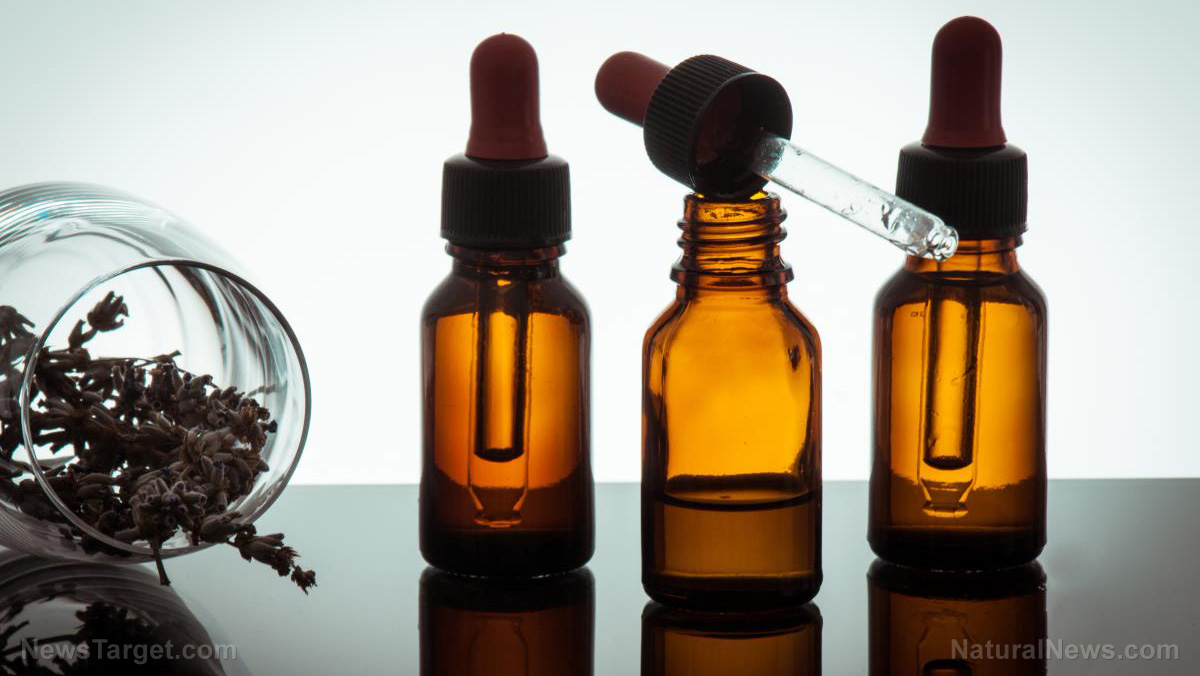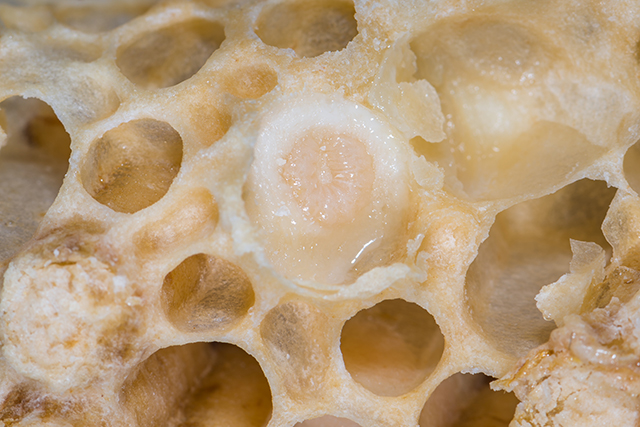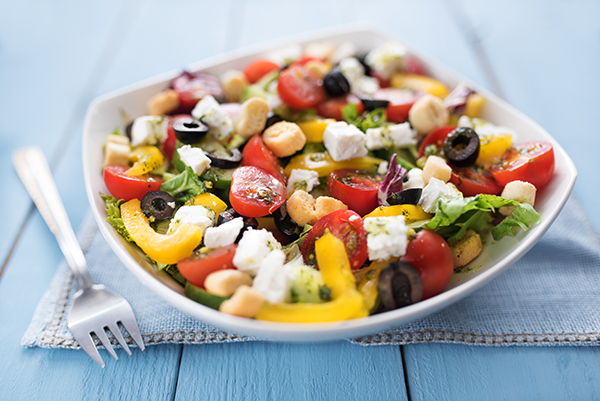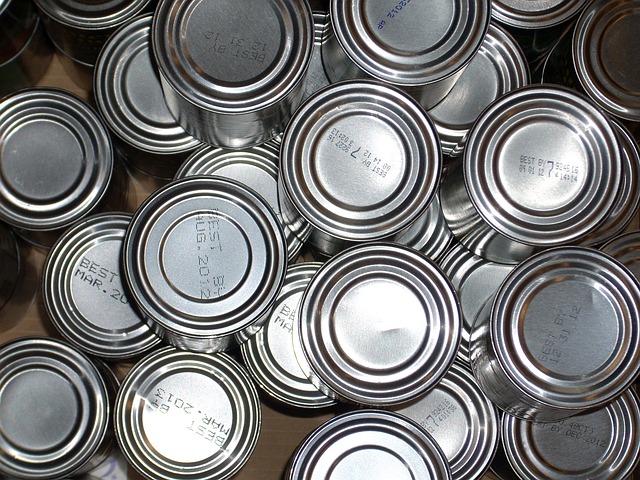Crafting natural perfumes: Blending Frankincense Oil with everyday scents
05/08/2025 / By HRS Editors

- Natural perfumes use pure essential oils from plants, avoiding synthetic additives that can irritate your skin, harm the environment or disrupt hormones.
- Unlike mass-produced perfumes, homemade versions let you tailor scents to your mood or needs.
- Top, middle and base notes are crucial when making custom scents. Top notes (light, fleeting scents like citrus or mint) create the first impression. Middle notes (like rosemary or chamomile) form the heart of the fragrance. Base notes (like frankincense or sandalwood) anchor the scent and make it last.
- Choose a base and blend oils strategically. Use three to five oils and follow the classic ratio of 10 percent essential oils to 90 percent base.
- Skip generic fragrances and craft a unique, natural perfume that reflects your personality.
Natural perfumes harness the purity of essential oils extracted directly from plants, eliminating the synthetic additives found in many commercial products. These additives, which are often linked to skin irritation, environmental harm and even endocrine disruption, frequently overshadow the sensory experience.
By contrast, natural oils like frankincense oil invoke a rich, delicate harmony offering some benefits. Frankincense, for instance, has long been revered for its grounding aroma, making it a cornerstone for perfumes seeking both olfactory allure and overall wellness.
A key advantage lies in customizability. While commercial perfumes cater to mass tastes, homemade versions allow for personal expression.
Imagine a perfume that mirrors your mood: energetic citrus top notes for mornings, floral middle notes for midday calm and smoky base notes for evening relaxation. Such precision tailoring fosters a deeper connection between scent and self, turning perfumery into a form of mindful self-care. (h/t to SchoolOfNaturalSkincare.com)
The science of scent composition: Notes explained
Every perfume is an olfactory symphony, built on notes or layers of scent that unfold over hours.
These categories guide how to balance oils for longevity and harmony:
Top notes
Top notes leave the first impression of your perfume and are light, fleeting scents. These essential oils can support a positive mood:
- Bergamot
- Citronella
- Eucalyptus
- Grapefruit
- Lemon
- Lemongrass
- Lime
- Neroli
- Peppermint
- Pine
- Tangerine
- Tea tree
- Thyme
Middle notes
Middle notes are considered the heart of the fragrance. They are mellow and you smell them after the top note.
Examples:
- Chamomile
- Cypress
- Geranium
- Juniper
- Marjoram
- Orange
- Rosemary
- Spruce
Base notes
Base notes come from rich, enduring oils such as frankincense and sandalwood that anchor the composition. As “fixatives,” your base notes evaporate, allowing the scent to linger.
Examples:
- Cedarwood
- Clove
- Frankincense
- Ginger
- Myrrh
- Patchouli
- Rose
- Sandalwood
- Vanilla
- Vetiver
- Ylang ylang
Understanding notes ensures that your crafted perfumes evolve artistically.
For example, a blend might begin with zesty lemon (top), transition into rosemary (middle) and settle into a cozy frankincense base. This fragrance mirrors your day from morning to night.
Crafting your perfume, step by step
While the process invites creativity, these foundational steps ensure success:
Choose your base
Base oils act as vehicles for essential oils. Carrier oils like jojoba, which are non-greasy and long-lasting, are ideal.
For solids, beeswax adds texture and longevity, while liquid perfumes typically blend jojoba or almond oil with alcohol for dispersing scent. Some alcohol-free options are also available.
Select essential oils strategically
Start with small drops because essential oils are potent. A classic ratio for liquid perfumes is 10 percent essential oils to 90 percent base.
Stick to three to five oils per blend to avoid confusion. For instance, a festive winter perfume might pair frankincense and myrrh (base) with vanilla for warmth, while a summer scent could feature citrus and lavender.
Mix and wait
Combine the oils gently, avoiding heat that might spoil aromas. Unlike alcohol-based blends needing aging, oil-based perfumes may be ready faster, though patience enhances depth. (Related: 3 Luxurious DIY skincare recipes using Organic Coconut Oil and Frankincense Oil.)
Natural perfume recipes to try
Below are some recipes for natural perfumes that use non-toxic ingredients like essential oils:
Woody/spicy essential oils perfume
This liquid oil-based perfume features beautiful woody and spicy scents. Adjust the ratios based on your personal preferences.
Ingredients:
- 10 ml jojoba oil
- 15 drops frankincense essential oil
- 9 drops lavender essential oil
- 6 drops cedarwood essential oil
- 15 ml glass bottle (a roll-on bottle or one with a pipette)
Directions:
- Pour the jojoba oil into the glass bottle.
- Add the essential oil drops carefully.
- Place the lid on the bottle and shake gently to blend all the oils.
Holiday frankincense and myrrh essential oils perfume
This perfume featuring fragrant frankincense and myrrh essential oils is the perfect fragrant holiday gift for your loved ones.
Ingredients:
- Jojoba oil (enough to fill the bottle)
- 12 drops vanilla essential oil
- 6 drops frankincense essential oil
- 4 drops cedarwood essential oil
- 4 drops myrrh essential oil
- 10 ml roller bottle
Directions:
- Pour all the essential oils into the roller bottle.
- Slowly fill the roller bottle to the top with jojoba oil. Place the roller ball back in and the cap on.
- Shake well before using or giving as a gift.
Natural perfume-making transcends mere creation as a mindful ritual. It invites curiosity about botanicals’ stories, from ancient frankincense resin revered by cultures worldwide to lavender’s calming whispers.
So why box yourself into pre-made fragrances when you can design a scent as unique as you are? Whether as a serene personal indulgence or a heartfelt gift, natural perfumes transform living spaces and people, one fragrant drop at a time.
Where to get lab-verified essential oils for DIY perfumes
The Health Ranger Store wants to make it easy for you to find high-quality products for different home projects like DIY perfumes, which is why we’re offering Organic Frankincense Serrata Essential Oil and Organic Lavender Essential Oil.
Frankincense serrata essential oil contains powerful components that give it natural cleansing properties, such as alpha- and beta-pinene, limonene, myrcene and linalool. These compounds make frankincense serrata essential oil a great addition to homemade natural cleaning solutions. It’s also a great ingredient to use for custom fragrances.
Health Ranger Select Organic Frankincense Serrata Essential Oil is carefully extracted from the sap of the Indian frankincense tree (Boswellia serrata) and is a great all-around essential oil for your home and self-care needs.
This super versatile essential oil contains no additives, fillers or synthetic chemicals. It is also certified organic and rigorously lab tested for glyphosate, heavy metals and microbiology.
Health Ranger’s Organic Lavender Essential Oil is carefully extracted from the flowers of the Lavandula angustifolia plant through steam distillation. It has a distinct floral scent, marked by sweet herbal nuances and rich green accents that will transport your mind to a fragrant lavender field.
Freshen your home, linens and clothes by placing a few drops of lavender essential oil in your diffuser, wardrobe or on your mattress. You can also use lavender essential oil to make DIY perfumes, soaps, lotions, bath salt soaks, massage oils and insect repellents.
You can also lift your mood by adding this fragrant essential oil to your bath water and enjoying a luxurious lavender bubble bath.
Health Ranger’s Organic Lavender Essential Oil is non-toxic, non-GMO, non-China and certified organic. It is also extensively lab tested for glyphosate, heavy metals and microbiology.
Visit Health Ranger Store and Brighteon Store to find more fragrant, lab-verified essential oils. You can also visit NaturalNewsTips.com for more ideas on how to use essential oils for other DIY projects.
Click on this link to find out why you also need Frankincense Serrata Essential Oil in your survival cache.
Watch this clip for spring cleaning tips using essential oils.
This video is from the Health Ranger Store channel on Brighteon.com.
More related stories:
Prepper’s guide to using ESSENTIAL OILS for skincare.
Why essential oils are must-have barter items when SHTF.
Rue 101: Everything you need to know about the “herb of grace.”
Sources include:
Submit a correction >>
Tagged Under:
Cosmetics, DIY, essential oils, fragrances, frankincense oil, green living, homesteading, how-to, natural health, natural ingredients, natural perfumes, off grid, Personal care products, recipes
This article may contain statements that reflect the opinion of the author




















